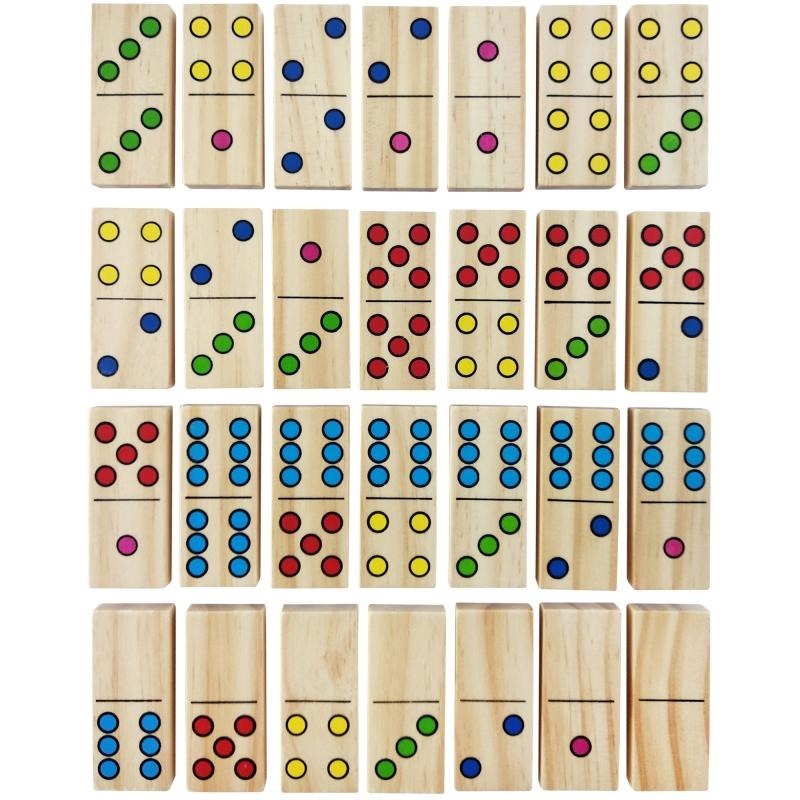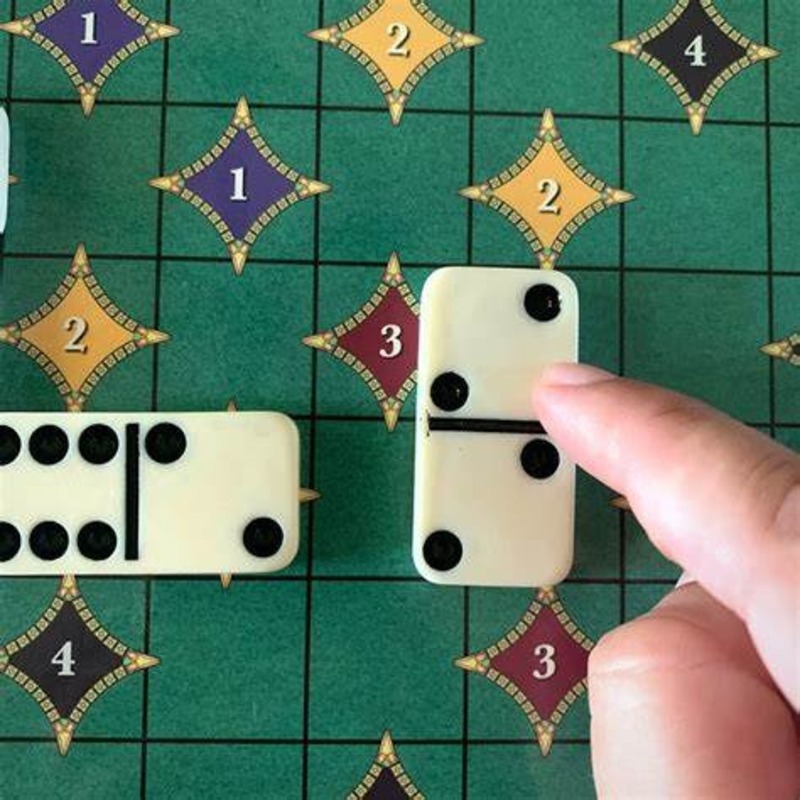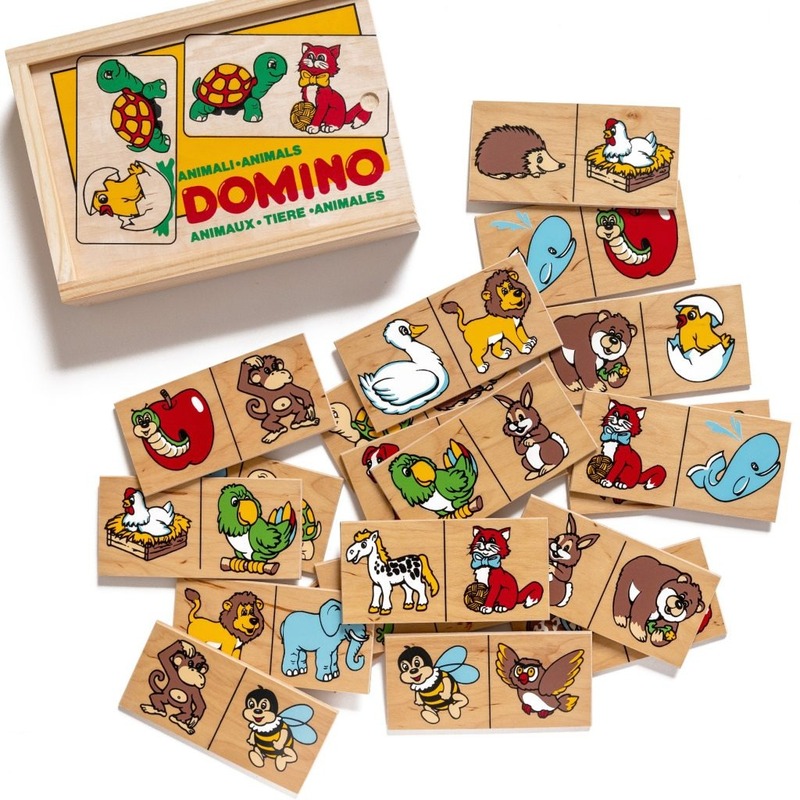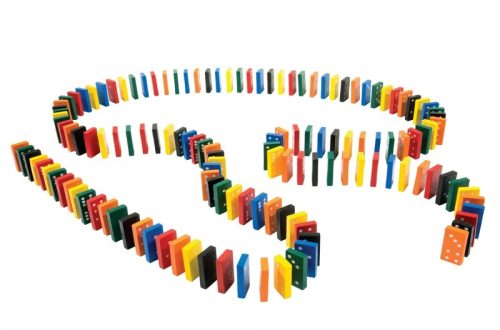The Origins and Basics of Dominoes
The game of dominoes has a rich history, believed to have originated in China. The actual roots of dominoes date back to the 12th century. This tile-based game has since spread worldwide, gaining popularity in Europe and the Americas. Understanding its background can enhance the enjoyment for beginners learning how to play dominoes.
Dominoes consists of rectangular tiles, often referred to as bones. Each tile represents two numbers through dots, similar to dice. A standard set, also known as a deck or pack, contains 28 pieces. These pieces range from a blank (no dots) to six on each end, called doubles.
Before learning how to play dominoes for beginners, familiarize yourself with the basic components. Recognize each tile by the number of dots. This step is crucial as it helps you identify possible moves during a game. Dominoes is a game of matching these numbers in a chain-like sequence on a flat surface, such as a table.
Each domino game starts with shuffling the tiles face down. Players then draw their hand from the shuffled ‘boneyard’. The simplest form of play involves matching the dots on the tiles end-to-end. However, different variations add unique twists to this matching process.
For beginners, getting to grips with the origins and basics sets a solid foundation. With practice and experience, you can swiftly move from learning the basics to honing your strategies for a winning edge.
Understanding the Equipment: Domino Tiles and Sets
To excel in any game, knowing your equipment is key. In dominoes, this means understanding the tiles and sets. Each domino tile has a specific design with a line dividing it into two squares, each with a number of dots, or ‘pips’. These pips represent numbers and are critical for gameplay.
A standard domino set, often called a ‘double-six’, includes 28 tiles. These range from double blank (no pips) to double six (six pips on each end). Advanced sets like double-nine or double-twelve increase the number of tiles and possibilities, ideal for more players or complex games.
For beginners learning how to play dominoes, start with a double-six set. Get familiar with the feel of the tiles, usually made of ivory, bone, or a composite material. Each set comes in a box or case for easy storage and transport.
Remember to look after your dominoes. Keep them clean and free of dirt or stains. Respect for the equipment is part of the game’s etiquette and ensures a fair and enjoyable experience for all players.

Setting Up Your Game: Arranging the Dominoes
Arranging your game of dominoes correctly is essential for smooth play. To begin, shuffle the dominoes face-down on a flat surface. This ensures a random distribution of tiles for each player. Make sure all players cannot see the faces of the tiles during shuffling. After shuffling, each player draws a set number of tiles to create their hand. The number of tiles drawn depends on the number of players in the game.
For a typical game with two to four players, each person draws seven tiles from the boneyard. In larger games, players may draw fewer tiles. With your tiles drawn, stand them on edge so that only you can see their values. This keeps your potential moves secret from competitors. The remaining tiles form the boneyard and are used later in the game.
Once all players have their hands, find the player with the highest double to begin the game. This player places the highest double in the center of the play area to start the layout. The layout grows as players add matching tiles during their turns. Remember, the key in how to play dominoes for beginners is keeping the game’s flow. Properly arranging dominoes can set the stage for an engaging and competitive match.
Game Variations: Block, Draw, and Other Popular Types
Dominoes offer different versions, tailoring to various skill levels and preferences. Two primary types stand out for beginners: Block and Draw dominoes. Each has unique rules and strategies. Knowing these can add diversity to your gameplay. Let’s explore the Block and Draw games and some other popular variations you might encounter.
Block Dominoes
The Block game is the simplest form. Here, you play till someone wins or all tiles are used. The goal is to empty your hand while blocking your opponents from doing so. If no moves remain, the player with the least pips on their tiles wins.
Draw Dominoes
The Draw game is similar to Block, but with a twist. If you can’t play a tile, you must draw from the boneyard until you can. This continues the game and can change the outcome.
Other popular types include ‘Mexican Train’, ‘Chickenfoot’, and ‘All Fives’. All Fives scores points for layouts with pips totaling a multiple of five. Mexican Train and Chickenfoot have special rules that create branching layouts. Players typically add a piece to a communal ‘train’ in Mexican Train, while Chickenfoot starts with a central piece and splits into three new chains.
When learning how to play dominoes for beginners, start with Block or Draw. These foundational games teach you the basics. From there, explore other types to keep the game fresh and exciting. Remember, practice is key. The more you play, the better you’ll understand the intricate strategies of each variation.

Rules of the Game: Starting Play and Scoring
Once you’ve arranged the dominoes and know which game you’re playing, it’s time to start. The player with the highest double places this tile in the center. This start is the same for most domino games. Remember, in Block games, you win by playing all your tiles. In Draw, draw more tiles if you can’t play. The play passes to the next player.
Scoring in dominoes can differ among games. In Block and Draw, the winner’s score is the total pips left in the opponents’ hands. Some games, like All Fives, score during play. You earn points for tile ends that add up to multiples of five.
To kick off the game, shuffle the tiles facedown. After drawing hands, the highest double begins play. Each turn involves matching a tile from your hand to the open ends on the table. Take turns adding tiles to create a line or a pattern, depending on the variation.
Keep scores on paper to track through the game. Scoring can impact how you play. In some games, it can change your strategy based on your and opponents’ tiles. The player with the lowest score or the first to place all tiles wins.
For beginners, understand these basic rules. Know how to start and how to score. This knowledge sets the groundwork for becoming a skilled player. Practice these rules as you play more games.
Strategies for Winning at Dominoes
Developing effective strategies can elevate a beginner’s game of dominoes significantly. To transition from understanding the basics to mastering the art of play, focus on a few winning tactics.
- Analyze Your Tiles: Start by evaluating the tiles in your hand. Plan your moves by considering both offensive and defensive strategies. Aim to keep a variety of numbers so you can have more options on your turn.
- Monitor Opponents’ Hands: Pay attention to the tiles played by others. This can give you insight into what they might hold. Use this knowledge to block their next move and to strategize your plays.
- Hold onto Doubles: Doubles can be tricky to play later in the game, so try to use them early. If you keep them for too long, they might leave you stuck with points against you.
- Control the Board: Try to play your tiles to steer the game. Influencing the direction of play can benefit you, especially if you’re leading in points or trying to prevent others from scoring.
- Keep Score in Mind: If you’re playing a scoring game, plan for points. Playing a tile that might prompt the next player to score is risky; aim to play tiles that would limit their scoring opportunities.
- Adapt Your Strategy: Dominoes is dynamic, so be ready to change your approach as the game unfolds. Flexibility can save you from unpredictable moves by opponents.
By integrating these strategies into your gameplay, you’ll improve your chances of winning. Practice regularly, for each game session sharpens your skills. Remember, experience is a valuable teacher.

Playing Dominoes Online vs. In-Person
Choosing where to play dominoes can impact your experience. Beginners may wonder whether to play online or in-person. Both have pros and cons.
Playing online offers convenience. You can play anytime and anywhere with an internet connection. It’s great for practice, as you can face different opponents. Online platforms often have tutorials, which can help beginners.
However, playing online means you miss in-person interaction. You don’t get to feel the tiles or enjoy the social aspect of the game. Some players find this important for the full dominoes experience.
In-person play has tradition. You meet friends or make new ones. The tactile sensation of shuffling and placing tiles is part of the fun. In-person games can also teach etiquette and sportsmanship.
But, in-person games require scheduling and traveling. You may find less variety in opponents compared to online platforms.
As a beginner, try both ways of playing. See which one you enjoy more and which helps you learn better. Both can help you understand how to play dominoes for beginners. Over time, you might prefer one or enjoy switching between both. The choice is yours.
Common Mistakes to Avoid for New Players
As players begin to learn how to play dominoes for beginners, there are common pitfalls to be wary of. Steering clear of these can enhance your gameplay and enjoyment of the game.
- Not Paying Attention to the Boneyard: Novices often overlook the importance of the tiles left in the boneyard. Keep track of these tiles, as they can affect the game’s direction and your strategy.
- Miscounting Tiles: Always double-check the pips on your tiles and those on the table. Simple counting errors can lead to missed opportunities or strategic blunders.
- Forgetting to Block Opponents: In their eagerness to play their own tiles, beginners might forget to play defensively. Blocking your opponent can be as significant as advancing your own gameplay.
- Holding on to High-Value Tiles: Holding high-value tiles for too long can be risky. If the game ends and you’re stuck with these, they’ll count against your score.
- Ignoring the Opponents’ Hands: Failing to observe what tiles your opponents are playing can cost you the game. Pay close attention to guess their remaining tiles and adjust your strategy.
- Lack of Flexibility in Strategy: Rigid adherence to a single strategy is a common mistake. The game can change rapidly, requiring a shift in approach to stay ahead.
- Forgetting Game Etiquette: Being courteous and following game etiquette is crucial. It maintains game flow and ensures an enjoyable experience for everyone involved.
By avoiding these errors, beginners can quickly progress from just understanding the basics to playing dominoes competitively. Remember to keep a keen eye on the game, adapt strategies as needed, and always play respectfully.
Etiquette and Sportsmanship in Domino Games
Playing dominoes is not just about winning; it’s also about how you play the game. For newcomers learning how to play dominoes for beginners, understanding and practicing good etiquette is just as vital as mastering the rules and strategies. Here are essential guidelines to ensure a respectful and enjoyable game for everyone involved:
- Respect the Equipment: Treat domino tiles and sets with care. Doing so shows respect for the game and your fellow players.
- Be Punctual: If you’re playing in-person, arrive on time. This shows respect for the game and the other players.
- Take Turns Gracefully: Wait your turn and avoid rushing others. Patience is key to a pleasant game atmosphere.
- Avoid Distractions: Focus on the game. Limit talking about unrelated topics. Concentrate to avoid errors and keep the game moving smoothly.
- Handle Defeat Well: If you lose, do so gracefully. Congratulate the winner and learn from the experience.
- Celebrate Wins Modestly: If you win, be modest. Bragging can spoil the fun for others.
- Encourage Others: Support beginners and offer constructive advice. Kindness fosters a positive gaming environment.
Keep these tips in mind, and you’ll help create an enjoyable experience for everyone who plays. Good etiquette in dominoes reflects well on you as a player, whether you’re playing online or in person. And remember, the goal of playing dominoes for beginners should not only be to play well but to play with honor and integrity.





